Diversifying the Curriculum, A Perspective
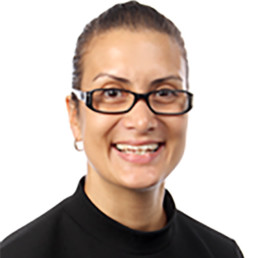
Written by Diana Ohene-Darko
Assistant Head, Pinner Park Primary School; Interim Deputy Headteacher, Holy Trinity Primary School, Finchley; Senior Consultant, Educating for Equality.
Currently, I work in a large London primary school as an Assistant Headteacher. I am a champion for, and have worked extensively on, equality education and children’s rights. We are in a great time of momentum in advocating for racial justice in education. I want to see a curriculum that reflects all the children and families we serve so that there is an inherent sense of identity and belonging.
Introduction
This article aims to shed light on the current situation with regard to race relations in education and diversifying the curriculum. Is diversifying it enough? Considering key documents and events, the article outlines what can be done in order for diversification of the curriculum to take place, or even before it takes place. I offer a perspective on celebrating and appreciating the pupils and staff we serve, rather than ‘tolerating’ each other. In essence, diversity needs to go mainstream.
In May 2020, George Floyd was brutally murdered, and the world was watching. His death sparked a global movement for change, not just for equality but also for equity of outcomes for Black people and people of colour—the global majority1.
In the UK, over 92% of Headteachers are White (DfE, 2021) serving a nationally diverse population. Before even thinking about diversifying, or indeed decolonising the curriculum, there has to be groundwork done in so far as personal reflection for unconscious bias across educational institutions as a whole and for practitioners individually. Time, hard work and commitment are needed to address issues of bias towards the global ethnic majority here in the UK, other disadvantaged groups and those belonging to protected characteristics. Race relations are at a pivotal point in education. Addressing biases is vital to ensuring at least a reasonable understanding of, and appreciation for, all people—and it is about time. By addressing unconscious biases and diversifying the curriculum, education can create a culture of belonging where each individual is celebrated for who they are, rather than being tolerated.
A call for change
It is not enough to say that there are ‘negative calls for decolonising the curriculum’ (Sewell, 2021). No longer can racism be tolerated. No longer can discrimination go unnoticed. No longer can micro-aggressions go unchallenged. Protected characteristics are protected for a reason- they safeguard who we are, our very core of being. Being protected by law carries weight and should be upheld.
How will each child leave school better than when they came? What ‘suitcase’ of learning will they leave with, having spent years in education, ready to travel the world with? How does a child of faith feel represented in the curriculum, for example? What about those from a disadvantaged background? A one-parent family? Those with same-sex parents? How does the curriculum seek to represent the broader population of Britain in all its glory of cultures, ethnicities, traditions, languages and families? Where do children belong? How do educational settings foster a sense of belonging that sees children and young people feel completely at home and at peace with who they are to erase the question of, ‘Where are you from?’ Or worse in response to ‘I was born here’, ‘No but where are you really from?’ In order to demonstrate that we, as practitioners value our learners, the curriculum needs to be ‘truly national’ (Alexander et al. 2015).
The current picture
Some schemes have already sought to address the issue of wider representation, such as the Jigsaw PSHE scheme (2021) and the Discovery RE (2021) programme. In their provision, they offer examples of different families and scenarios that are inclusive of wider society. Some schools are already making headway by creating their own learning journeys for children and young people. They offer urban adventure curricula, for example, and use the new [EYFS] reforms as a basis by which to advance already good practice with a specific focus on what exactly they want children to experience and achieve in order that they become well-rounded individuals, including talking about race. One example of this is Julien Grenier’s extensive work on curricular goals which see children learning to sew a stitch, ride a balance bike and bake a bread roll in Nursery. All aspirational, real-life outcomes for children, no matter their race, background or socio-economic class. On the face of it, there seems no link to race. However, by setting the bar high for all children at the same time, education is, in fact, providing an equality-first experience for our young ones where no learner is left behind.
Consideration of history
The National Curriculum of 1999 (Key Stages One and Two) sought to allow,
‘schools to meet the individual learning needs of pupils and to develop a distinctive character and ethos rooted in their local communities,’ (1999, pp.12).
Then came the (Primary) National Curriculum of 2014 which called for a curriculum that was ‘balanced and broadly based’ (2013, pp.5) promoting the development of the whole child and where teachers were to ‘take account of their duties’ (pp.8) where protected characteristics were concerned. The difficulty is, there are so many unconscious biases at play that even before a diverse curriculum can be devised, attitudes and unconscious biases must be addressed in the first instance as part of initial teacher-training and as part of the wider continuing professional development provision in schools.
The murder of Stephen Lawrence in April 1993 sparked a national debate around race and the impact of structural and institutional racism here in the UK, namely in the police force. As part of its findings, the Stephen Lawrence Inquiry Report (1999), stated that education should value cultural diversity and prevent racism ‘in order better to reflect the needs of a diverse society’ (Macpherson Report, 1999 pp. 382).
With a curriculum that spans British history across both primary and secondary phases, the representation of a generation of Commonwealth workers, including the Windrush generation, who came to help re-build our country post war is barely, if at all, represented. The ‘broad and balanced’ curriculum is one of a vastly colonial view, rather than the narratives of those enslaved as well as those who enslaved others. The same is true for the British rule in India and the impact for Indian citizens and the thousands of soldiers of colour from the Commonwealth who fought for Britain in the Second World War. There is gross under-representation of people of colour and their significant contribution to the British Empire as a whole.
Bringing education into the 21st century
More than twenty-eight years on from Stephen Lawrence and with the brutal murder of George Floyd on 25th May 2020, there is now widespread debate in education once again about the curriculum on offer and how to diversify it. But is diversifying it enough? It seems that colonial attitudes need to be addressed perhaps before diversifying the curriculum. Tackling unconscious (or even conscious) bias, white privilege, micro-aggressions and direct racism may come to be more effective, in other words, decolonising attitudes before decolonising the curriculum.
In the book, ‘I Belong Here, A Journey Along the Backbone of Britain’, the author writes openly about belonging and the ‘deep loneliness and isolation that can affect mental health’ without that sense of belonging (Sethi, 2021). This is in reflective reference to a racist attack she suffered in public as well as countless micro aggressions. Deeply engrained and entrenched racist attitudes need to be challenged. Micro-aggressions need to be challenged. Why? Because it is the right thing to do. The book weaves a narrative that calls for the work needed to be done in order to address micro-aggressions and the wider, long-lasting impact these have on those individuals who suffer them. Equality is everybody’s responsibility.
Imagine how children feel when they do not see themselves reflected in the curriculum- in books and resources, in texts and images, in the learning. There is a deep cavity indeed for children and families of colour. Despite being a global ethnic majority, their experience of the curriculum is all too often white Eurocentric; more specifically that of white, middle-class men, ‘male, pale and stale voices that need to be banished’ (Sperring, 2020 pp. 3).
In order to foster a deep sense of belonging in children, the curriculum needs to address issues of race, in the first instance, as well as other protected characteristics more widely. We are living in a multi-national society with a vast array of languages, cultures and traditions. Even in areas of which can possibly be described as mono ethnic, there still needs to be a national educational commitment to addressing the racial discord that currently exists. Difference should be both appreciated and celebrated. It is not enough to simply ‘tolerate’ other faiths, traditions, beliefs, cultures, customs or backgrounds. Tolerance is such a low bar.
The Black Curriculum Report (Arday,2021) highlights the drawbacks of the current curriculum, more specifically the history curriculum, which distinctly omits Black history, ‘in favour of a dominant White, Eurocentric curriculum, one that fails to reflect our multi-ethnic and broadly diverse society.’ (pp.4). It goes further to make several recommendations, in more detail than the Stephen Lawrence Inquiry Report, for example:
‘conventions of Britishness will always require reconceptualising to incorporate all of our histories and stories. Our curriculum requires an acknowledgement of the ethnic, cultural and religious diversity that comprises the tapestry of the British landscape and the varying identities associated within this.’ (pp.5)
What it calls for is an evaluation of the curriculum to include Black history in order that there be, ‘greater social cohesion and acceptance of racial and ethnic difference’ (pp.4).
By offering a ‘broad and balanced’ curriculum that is tailored to the demographics of the school population, you are reinforcing a deep sense of identity and belonging. Children and young people will feel seen, valued and understood for who they are, not just as individuals, but as a part of their communities. How empowering for our children and young people of today!
Rather than continuing the old-fashioned approach of British history, we should be teaching children and young people to be critical thinkers, to assess and appraise the evidence and different perspectives so that they can come to their own conclusions. No longer is it adequate enough to have diversity days or Black history month; to teach just one perspective. People of colour do not just exist for one day or one month of the year. There are countless scientists, historians and academics of colour who have made huge contributions to society as we know it. For example, although Thomas Edison may have invented the lightbulb as we know it, Lewis H. Latimer made a considerable contribution towards this. However, in those days it was rare for a person of colour to be attributed with such distinguished achievement. Another example is Wangari Maathai, Nobel Peace Prize laureate, known for her environmental activism in Kenya, ‘It’s the little things that citizens do. That’s what will make the difference. My little thing is planting trees.’ (Wilson, 2018). Where are they in the national curriculum?
In the Oxford Learner’s Dictionary, ‘national’ is defined as ‘connected with a particular nation; shared by a whole nation’ (Oxford Learner’s Dictionary). If education seeks to indeed connect the nation, and if it wants education to be a shared experience as a nation, then there is more work to be done. Diversity needs to go mainstream.
Young people need to know that who they are makes a difference. Not who they are because of an out-of-date system that continues to advance the privileged few, rather, who they are without the labels that are thrust upon them. They are not their labels. They are ‘humxns’2(Ricketts, 2021) who make a valid and significant contribution every day. Diversifying the curriculum should reflect this. Decolonising attitudes is the right thing to do- creating safe spaces to open up dialogue, offering long-term quality staff training, enriching the curriculum with a broader representation of different communities, making equality training mandatory for initial teacher training.
Data from the Department of Education shows that 92.7 per cent of headteachers and 89.7 per cent of deputy and assistant headteachers in the UK are white (DfE,
2 Humxn is the gender-neutral term for human. Urban Dictionary: humxn (2021) Urban Dictionar. Available at: https://www.urbandictionary.com/define.php?term=humxn. 2021). These figures show that all-white leadership teams run the majority of schools in the country, which is not necessarily reflective of the communities they serve, or even our nation as a whole.
More needs to be done to actively recruit and retain professionals from ethnically diverse groups. For example, anonymising applications for name, age, gender and university to name a few categories; randomising responses to scenario questions and eliminating the personal statement response so that colleagues can show what they would do as opposed to what they have done, thereby showing their potential against their experience and expertise, skills and qualifications.
Conclusion
These are just a few starting points. Essentially, good, quality equality work means hard work. It means making the uncomfortable comfortable. It means braving being vulnerable. It means addressing racism head on so that attitudes can change, as well as behaviours. ‘In this world there is room for everyone’ (Chaplin, 1940). Children should leave with a rich tapestry woven from learning and experiences that celebrate who they are, that give them every chance of further success in life, that elevate them in their sense of self-worth and identity. When a child asks, ‘Where do I belong?’ you can confidently say, ‘Here.’
References
Alexander, C., Weekes-Bernard, D., & Chatterji, J. (2015) History Lessons: Teaching Diversity in and through the History National Curriculum. London: Runnymede Trust. http://www.runnymedetrust. org/ uploads/History%20Lessons%20-%20Teaching%20 Diversity%20In%20and%20Through%20 the%20
History%20National%20Curriculum.pdf.
Arday, J. (2021) The Black Curriculum, Black British History in the National Curriculum Report 2021. pp.4-5.
Charlie Chaplin, The Great Dictator speech, taken from the film, The Great Dictator (1940) available at: https://www.charliechaplin.com/en/articles/29-the-final-speech from-the-great-dictator
Department for Education (2013) The National Curriculum in England: Framework Document. Available at: https://www.gov.uk/government/
uploads/system/uploads/attachment_data/ file/210969/NC_framework_document_- _FINAL.pdf (pp.5, pp.8)
Department for Education data available at: https://www.ethnicity-facts figures.service.gov.uk/workforce-and-business/workforce-diversity/school-teacher workforce/latest
Discovery RE Scheme Of Work | Discovery RE (2021) Discovery Scheme of Work. Available at: https://discoveryschemeofwork.com/ (Accessed: 16 September 2021). Primary and Secondary PSHE lessons fulfilling RSE | Jigsaw PSHE Ltd (2021) Jigsaw PSHE. Available at: https://www.jigsawpshe.com/ (Accessed: 15 September 2021).
Macpherson Report (1999), as part of The Stephen Lawrence Inquiry available at: https://assets.publishing.service.gov.uk/government/uploads/system/uploads/attach ment_data/file/277111/4262.pdf pp.382
Oxford Learner’s Dictionary, ‘National’ definition, available at:
https://www.oxfordlearnersdictionaries.com/definition/english/national_1?q=national
Ricketts, R. (2021) DO BETTER, SPIRITUAL ACTIVISM for Fighting and Healing from WHITE SUPREMACY
Sethi, A (2021) I Belong Here: A Journey Along the Backbone of Britain. Bloomsbury, London. ISBN 9781472983930.
Sewell, T. (2021) Commission on Race and Ethnic Disparities: The Report, can be found at:
https://assets.publishing.service.gov.uk/government/uploads/system/uploads/attach ment_data/file/974507/20210331_-_CRED_Report_-_FINAL_-_Web_Accessible.pdf
Sperring, K. (2020) Decolonising the curriculum: male, pale and stale voices that need to be banished. Available at: https://uclpimedia.com/online/lets-banish-the hierarchy-topped-by-male-pale-and-stale-voices-and-decolonise-the-curriculum
The Equality Act 2010 guidance, can be found at:
https://www.gov.uk/guidance/equality-act-2010-guidance
The National Curriculum 1999 available at:
http://www.educationengland.org.uk/documents/pdfs/1999-nc-primary-handbook.pdf. pp. 10, pp.12.
Wilson, J. (2018) Young, Gifted and Black. Wide Eyed Editions. ISBN978-1-78603- 983-5.
Our Pregnancy and Maternity Toolkit for Schools
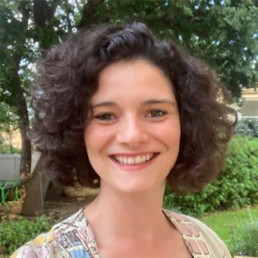
Written by Emma Sheppard
Emma founded The MTPT Project, the UK's charity for parent teachers, in 2016 when on maternity leave with her first child. She has 12 years experience as an English teacher, Lead Practitioner and ITT Lead, and now runs The MTPT Project full time.
The research, legal practice and variety of experiences surrounding the protected characteristic of pregnancy and maternity is rich and diverse, but perhaps because it does not (often) include our students in the way other protected characteristics do, resources specific to the education sector are hard to come by. We do not, for example, talk about diversifying our curriculum to include more stories of pregnancy and motherhood. We don’t talk about ensuring that our workforce includes pregnant role models for our students. We don’t organise student voice groups discussing how pregnancy and maternity affect pupils’ day to day school lives.
Provision for pregnancy and maternity as a protected characteristic is almost always in relation to staff members within our schools, nurseries and colleges. And it’s a fairly important demographic: the majority of teachers are women who may become pregnant at some point; half our workforce are parents to children under the age of 18, and 3.4% of teachers (around 11,500) go on maternity leave each year – that’s an average of two per school. But isn’t the experience of being a parent and a teacher the remit of our HR managers, rather than colleagues, middle and senior leaders?
Given the large number of parents in our teacher workforce, the protected characteristic of pregnancy and maternity – and the many years of family life that will follow – is an area about which leaders should be familiar and informed if they are keen to create positive working environments. As in any other industries, failing to understand and therefore meet the needs of our pregnant and mother team members leads to staff attrition, negative school cultures, and a motherhood penalty in the form of a gender pay gap, gender disparity in school leadership and discriminatory cultures that we present to our students as the reality that they will inherit.
The DiverseEd Pregnancy and Maternity Toolkit is an evolution of the research, resources, networks and articles that supported the establishment of The MTPT Project – the UK’s only charity for parent teachers. It provides the reports, blogs and contacts that The MTPT Project community return to again and again to inform their work and empower their community. When you start exploring, you’ll realise what a rabbit hole we have tempted you to fall into: 25 pages of an ASCL Maternity and Adoption Leave guide; ways to support breastfeeding teachers as they return to work; the experience of undergoing fertility treatment as a teacher; the ins and outs of shared parental leave; how to avoid direct and indirect discrimination… At first you may be overwhelmed by what you didn’t know you didn’t know…!
Don’t be put off: start with the needs of the colleagues in your school – whether they be expectant mothers, fathers or non-binary parents, undergoing fertility treatment, returning to work, completing professional development on leave. Use the DiverseEd toolkit to open up dialogue and get everyone feeling excited about how enjoyable making this next step in your personal and professional lives will be – learning to support, and be empowered, by your pregnant, expectant and parent colleagues.
Want to do more to support your colleagues? Contact The MTPT Project about our schools’ membership so that the experts can guide you through the relevant documents, and how to implement impactful practice in your school.
I think I too have known autumn too long
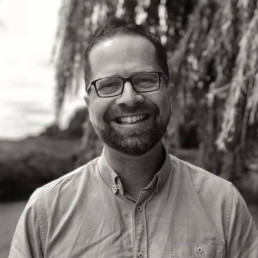
Written by Matthew Savage
Former international school Principal, proud father of two transgender adult children, Associate Consultant with LSC Education, and founder of #themonalisaeffect.
a wind has blown the rain away and blown
the sky away and all the leaves away,
and the trees stand. I think i too have known
autumn too long
(‘a wind has blown the rain away’, by e.e.cummings)
The westerly gales that frequently collide with our corner of Scotland at this time of year were so fierce last night that our front door was actually blown open. After battening it shut, I listened to the gusts howl across the moor, and began to think about the blog post I would write today.
It is difficult to read about education today without some reference to raising attainment after the disruption of the pandemic, but chasing better outcomes is hardly a new phenomenon. However, under the scrutinous spotlight of inspectorate or government, we can too easily overlook the powerful winds that buffet our students daily, influencing their learning and, even more importantly, their wellbeing far more powerfully than ever could, say, the quality of their teaching or the effectiveness of their curriculum.
These winds are manifold. Specifically, as we know, they can so easily be blown off course by their physical and mental health; by their diet, and their exercise or sleep (or lack thereof); by their media, and social media; by their peer and their family relationships; and by their identity and its complex, shifting components. Above all, however, a perfect storm of societal pressures batters each student with two prevailing winds – of performativity and normativity.
On the one hand, students receive a strong and consistent message that they must perform; indeed, their performance is measured, celebrated, prioritised and, above all, always visible. A consequence of this is that they can quickly identify their own worth in their performance, as strong a root as any for poor mental health in the future. On the other hand, students receive a contradictory message that they must be normal, and that normality is another means by which value can be conferred.
What, then, for the student who is not able, at any given time, to perform in the arena and against the criteria which have been arbitrarily allocated? And what if their own characteristics, the very building blocks of their identity, do not conform to the model that has been arbitrarily imposed? This is when many a student will choose borrowed robes, in a relentless effort to be seen to perform, to be normal, to be validated, convinced that their worth is conditional. But these robes sit heavy, and they do not fit.
A decade ago, I began to develop a concept I call #themonalisaeffect®, a data-fed, data-led approach to personalising the learning and wellbeing experience for every single student. And its mission? To ensure that each student can:
- be seen;
- be known;
- and belong.
Known and seen for who they actually are, and able, as a result, to belong, in their and our worlds. For it is with belonging that they can thrive, and, ironically, the thriving student will also be able to perform, but on their terms.
I have written at length about the unconditional love that has shaped my relationship with my own two children, because of, not despite, the characteristics they inhabit, and which the world must protect. Our schools must be places devoid of conditionality, for inclusivity, equity, justice can have no conditions. As long as the students in our schools believe that our attention, our affection and our validation are contingent on anything, we simply perpetuate an inherited paradigm. And as long as we do that, the winds will just keep blowing.
Groupthink is a trap: businesses do far better when there is diversity of thought

Written by Neil Bradbrook
Neil Bradbrook is managing director of Falkirk-based Ahead Business Consulting and a Fellow of the Institute of Leadership & Management.
When it comes to running a business, nothing is more important than diversity of thought. No matter how good a leader you think you are, it is the team you assemble around you that will help you succeed.
My business partner and I come from different backgrounds and that helps when we are making business decisions. We come to similar conclusions, but get there in different ways, challenging each other as we go.
It is not nearly enough, though. We might have to make the decisions, but we do not have all the answers, which is why it is so important that we listen to the team around us. Only when we hear the suggestions they are making and the solutions they are coming up with can we make a truly informed choice.
As human beings we are all social animals who like to interact and do things together. That applies in the workplace just as much as anywhere else. If you can create a working environment where people enjoy what they do and feel empowered to air their views, everybody benefits from the power of the team.
Taking on board views that differ widely from your own can be a challenge but looking at a problem from every possible angle is the way to find the best solutions. That means surrounding yourself with people from as many different backgrounds as possible rather than hiring in your own image.
That takes a conscious effort – we have all heard of unconscious bias, right? – and so self-awareness is key. No matter what position you are in – even if you are in charge of a huge global enterprise, as Elon Musk is at Tesla – you cannot ever think it is all about you. The very best senior managers are the ones that realise they might not be doing everything right.
A good manager should always be prepared to change their mind when presented with views that differ from their own. That is why listening is so important. Listen to what your employees have to say, listen to your customers, take advice. You do not have to act on every single thing but listen – and listen well – before making that call.
Trying to force people into your own mould will never work; embracing them as they are and seeking out the value they can bring, will. That can be difficult. Some team members can struggle to engage in a way you understand. They are the ones you have to invest even greater effort into listening to, because only by accepting that everyone can be part of the team will you have a truly inclusive organisation.
If you do not make an effort to show you are genuinely inclusive there are some people you are going to turn off. You will be the loser in that situation because you will be missing the opportunity to find out what they could add.
Some managers find it hard to empower the individuals in their team. That is understandable: few people are given the training they need to take on a management position, with most being promoted simply because they excelled in the role they were already in.
Without being told otherwise, it is easy to fall into the trap of thinking that with power comes responsibility and with responsibility comes the need to make all decisions alone.
But if team members feel they understand your organisation’s vision and their role within it – and that they have the autonomy and opportunity to contribute and make a difference – you get so much more out of them.
That is to everyone’s benefit. If you are all pulling in the same direction, and everyone knows what the effort is being put in for, it will be so much more effective than if you just have one or two people doing it.
I have always been a firm believer that the power of the team is far greater than that of the individual; if you get the team right, collectively you will be so much stronger than each of you on your own.
Inclusion - A Parenting Perspective
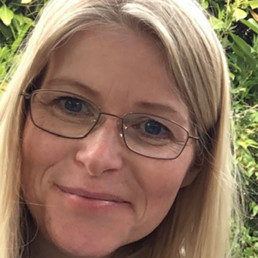
Written by Helen Weston
Helen has two children with significant medical needs which has resulted in her becoming their part time nurse, teacher and advocate whilst simultaneously attempting to be a reasonable parent! Prior to this she worked in Early Years and family support.
Inclusion is a perpetual discussion amongst both teachers and parents alike. This is likely because it has a number of different interpretations which aren’t always agreed upon, it can also be both an ethos and an action. I want all children to feel safe and secure, welcome and considered whilst being educated. My son wants to be remembered that he exists.
As a parent of two children with chronic health needs, the navigation of an equitable education for them has been incredibly challenging. During the last 11 years my children have experienced the best and worst of inclusive practices in various schools.
Effective inclusive practice in my experience always comes from attitudes and ethos and never from expectations of statutory requirements. Funding has been entirely irrelevant, no amount of funding can influence cultural shift. Ethical leaders create that, not money. If a Head is unable to easily explain how their policies and planning sit within the Equality Act, for example, a rigid 100% attendance award policy, yet has an inclusion poster in their reception area, then as a parent, I know my child will never feel a sense of belonging or self worth in this school.
Schools that are child centred rather than data driven always value inclusion, they offer a genuine partnership with families and a proactive approach, again this starts with leadership and is embedded within the every day workings of the school. Teachers who are prepared to listen, reflect and act, can make a huge difference to a child’s perception of their illness or disability and reduce their feelings of difference. This enables them to be more readily able to learn.
One of my children has only ever been able to attend school on a part time basis due to his health. For 4 years he attended his school every morning, his school thought they were inclusive for facilitating a part time timetable, yet he was never offered a broad and balanced curriculum. He was only ever taught Maths and English despite regularly requesting to learn science or do PE with his peers, but their timetable was rigid.
We eventually moved him to a neighbouring school, the difference in attitudes was remarkable. He was listened to and the timetable was swapped around. For the first time in his school career he did PE, science, & enrichment. He was 9 years old. He also took part in his first ever Christmas concert because the practices were moved to the mornings so he could be involved . He had real friends for the first time, adults had role modelled to them that he was an equally valuable member of the school community. His friends looked out for him, helped him, cared for him because this was the ethos of the school and these values were their norm.
At his previous school he had had long periods of time off unwell, upon return to school, staff and children alike would rarely ask after his well-being. In contrast, in his new school his teacher set up a video call with him and his classmates so they could have a chat and check in with one another.
She would also provide him with allergy safe treats when giving a whole class reward. He had never experienced this before. Ultimately inclusion was everyone’s responsibility and not just the role of the ‘Inclusion Manager.’ My experience identified that by outsourcing inclusion to just one individual, others were removed from ever having any consideration for inclusion.
School trips can be a real eye opener as to how inclusive schools are. We have had numerous experiences of schools not bothering to plan for accessibility or do risk assessments therefore having to do them myself last minute ( and on one occasion discovering the activity was unsafe for our son’s medical condition.)
Yet there have also been examples of how early planning and communication can enable trips to be successful, not just practically, but also emotionally positive. My son attended a school residential as a day visitor. The timings of his visits were chosen in collaboration with him, myself, school as well as the activity centre, to ensure he was able to access all the activities offered at that time safely. He was still allocated a room and a bed, his tube feeds were fitted around activities, pacing was done subtly, a special harness was used. Almost three years later, he still talks about that trip with such joyful memories.
The ‘what can we do’ approach is the best way of creating meaningful change, including the child & parents in working through solutions in partnership with schools. My youngest is now in secondary and I note with interest, their use of their term, ‘flexible’, over inclusion. Right now, this is what works best for my son, flexibility, trust and regular communication. Inclusion is not the same for every child but the essence of belonging should feel the same for all.
Toothless Lionesses
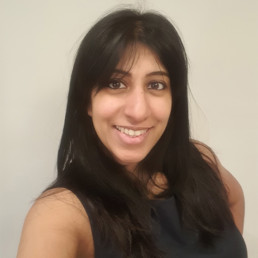
Written by Bhamika Bhudia
English teacher and lead teacher in a mixed comprehensive secondary school in North-West London. She tweets as MissMika_Eng
Does the “aggressive” Woman of Colour trope lead to a generation of toothless lionesses?
Women of colour have to navigate the western world with careful footing. Sidelined and stereotyped within the media and underrepresented at leadership tables, conducting herself in offices, classrooms and meetings is a difficult, political affair. Managing standing up for herself, being heard, demanding a seat at the table all the while not being deemed too aggressive, requires strategizing but at what cost? Surely this lack of freedom to express herself honestly and fully has detrimental effects on her confidence, self worth and identity as a whole?
In my quest to make my workplace and environment a more celebratory and inclusive place, I have had to take a real look inwards at my role as a woman of colour (a term I am still uncomfortable with), and I have had a rude awakening!
I have always considered myself (and I think have been considered) to be a confident woman. I am able to stand up for what I believe in, I have carved myself a seat at the table and my voice is one that is heard. But as policies are put into practice and ideologies around celebrating culture and acknowledging diversity are being discussed at that very table, I have come to question how many waves I actually make, how often I quietly avoid a stir and how many self-sabotory behaviours I demonstrate.
Diversity-hire:
According to the School Workforce Consensus (2019) only, 6.2% of assistant heads and deputies are from ethnic minorities and while women comprise 67% of the country’s headteachers, a mere 3.9% of them identify as non-white. The statistics speak for themselves, yet despite knowing this, every job and promotion I have ever gotten has been followed by inner doubt questioning whether I was a diversity hire. The odds are clearly stacked against me, but this toxic imposter syndrome based solely on my demographic is obviously very damaging. And it can’t be just me – I didn’t invent this notion or phrasing, it has to come from somewhere. I am very doubtful that I am the only one who has felt this way yet my achievements are continually downplayed in my mind because I happen to fit this box that ironically enough, isn’t actually getting filled in the real world!
Say my name!
It is now widely acknowledged that continual mispronunciation of people’s names is a microaggression and is damaging. Spending my entire life as Bhamika Bhudia has been tricky. I have always expected people not to get my name right to begin with – it’s an unusual name – and I take absolutely no offense when people don’t get it right away. I have been quick to correct them, the first, second and third time but after that, I drop it. I have worked with people for years that have continued to call me by some other moniker. Until this last year, I have let these aggressions slide for fear of being rude, making things awkward or making other people feel bad. It is not ok, and should not have taken me 37 years of life to realise this. It is my duty as a role model for children to address this but for my entire life, I have placed the feelings or others ahead of my own; clearly I did not feel my name was worthy enough of causing a stir.
Bite your lip:
On the same note, causing that stir is a real predicament for those in my demographic in far more contentious circumstances than pronunciations. I have heard many a story of meetings, conflicts and general grievances of women who look like me, shut down because they were deemed too “aggressive”. Conducting myself in sensitive circumstances is a tight-rope I tread very carefully on. I always say, with a strong hint or irony and an even stronger note of bitterness, that my life would be so much easier if I was a cryer. If, when it came to conflict, I was the sensitive one who could alleviate circumstances and even shift responsibility by showing my emotions and expressing my hurt/offense in a more “feminine” way. Now I’m not saying all tears are manipulatory nor am I condoning toxic femininity but there have been times and continue to be so where I am unable to express my offense at derogatory comments or behaviours towards me, no matter how professionally or politely I handle them, for fear of becoming the aggressor. I have bitten my lip, publicly and privately because when it comes down to it, I am afraid that I will be blamed for upsetting the other person despite being the offended party. I always assumed it was a “me” thing, perhaps even a “female” thing, but once again, this reflection has led me to connect the dots. Women of colour being branded and dismissed as “aggressive” is a historical thing; it does not stop at me nor did it begin there.
This post has been very difficult to write. I have taken a look at myself and honestly I do not like what I see. I thought I was strong, I thought I was a good role model and discovering that I am far from that has been a difficult discovery indeed. But now I have seen that despite my “aggressive” nature, I am still doing myself and every woman of colour after me, a huge disservice by bowing down, and sitting quietly. My teeth may have been blunted up until now, but at the risk of ending with a huge cliche, I will make sure my lioness comes out in full force, not only for myself but also for those I model my behaviour for.
Attention Policymakers: We Need to Update the School Curriculum

Written by Naida Allen
Naida is a writer and blogger, fuelled by coffee and dark humour. She is a mental health advocate and regularly uses her own experiences to raise awareness about social issues. Her aim is to break stigma around taboo topics and enlighten the masses through the art of words. She loves dogs, and hates the patriarchy.
Given the significant impact of the Black Lives Matter movement on the criminal justice system, it’s only natural for this event to trickle into the education system. The British school curriculum is outdated at best. It will come as no shock to know that 85% of secondary school texts studied were written by White authors. The lack of diversity is damaging both socially and educationally. The year is 2021, and we are still waiting for change.
After the murder of George Floyd, the world woke up. We could no longer stay silent; the time to take action had arrived. Amongst many deep-rooted racist issues that still exist in British society, one that became impossible to ignore was the issue with the school curriculum. Secondary school pupils across the country (and the world for that matter) are not taught the truth about the UK’s shady history. The broad lack of diversity exists across all school subjects, from English and Drama to History and Science.
Even the American K-12 curriculum lacks punch. The Coalition of Educational Justice (CEJ) in New York recently published a shocking set of statistics that puts the school curriculum to shame. Their enquiry into the lack of diversity found that 4 out of 5 books studied in English were written by a White person. Similarly, a national UK study by Penguin Books found that less than 1% of GCSE students studied a book by a writer of colour.
It goes without mentioning that it is not just Black authors and people of colour who are marginalized. No; it is also women — and worse still — Black women who are frozen out. There is rarely a platform for LGBTQ+ authors, or awareness in their struggles, which adds to the exclusion and creation of ‘otherness’.
Yet it has to be a top-down approach for us to succeed in any social change. The current school curriculum contributes to perverse attempts to sugarcoat the past, allowing White people to hold the monopoly of power. Gestures that arguably verge on tokenistic, like “Black History Month” are the bare minimum. They are designed to keep the peace, but are ultimately just performative in nature. As Jean Alexander states, “it is a game play for the survival of a democratic society”.
My message today is to the policymakers: we need to update the school curriculum. If history, implicit and institutional racism, or celebrating Black achievements are not prioritised in schools, we can assume change still sits on the backburner. Young people will only learn when we own up to our mistakes. For there to be any hope in a harmonious society, we need to right our wrongs as best we can. The optimum approach is an authentic one.
So, teach students about Britain’s role in colonialism. Explain why the prison population is overrepresented by Black people and ethnic minorities. Study fiction and non-fiction texts across all subjects written by non-white authors. Take English as an example; whilst Shakespeare is undoubtedly important for the development of language, Zora Neale Hurston’s Their Eyes Were Watching God remains underrepresented. Consider adding Zadie Smith and Reni-Eddo Lodge to the English syllabus. This will by no means erase centuries of oppression; it will, however, inspire development.
The fact of the matter is, these texts are not hard to come by. There is a long list of potential contenders written by Black women, from textbooks and fictional narratives to plays; and they are all critically-acclaimed. Why, then, are we not capitalising on this opportunity? There is no better way to teach students about human rights and social justice than directly from the horse’s mouth.
An example of where this sincerity has worked is in Germany; their school curriculum shows significantly more willingness to revisit and admit to past mistakes. Teachers will openly discuss the German role in the Holocaust and WW2; many students will at some point visit a concentration camp. At no point do they attempt to disguise their atrocities. In doing so, they are now more respected by other nations. This is how to rewrite the future.
The irony is, British schools are the first to slander Nazi Germany for their war crimes, particularly when it comes to the Holocaust. Where is this zealous attitude when documenting our own actions on the History syllabus, for example, as colonialists? Instead, students learn about what makes Britain so Great. We share how we were the first to abolish slavery, but not that explorer, John Hawkins, was the first to start the slave trade in 1562.
Reform starts in school. We cannot expect the youth of today to differ from our predecessors if we do not light the torch. For students to thrive, they need to be represented in all their diversity. It is simply not good enough for only 0.1% of pupils to study a text by a Black female author. When you do not see yourself represented, your dreams and options are extremely limited. This is what inevitably leads to apathy and missed opportunities in the community.
We need to mention the achievements and discoveries of both people of colour and Black people – scientists, mathematicians, poets, historians. For example: Madam C.J. Walker who created the first African-American hair care products; Elijah McCoy who invented the ironing board; Tu Youyou who discovered artemisinin, the treatment for malaria.
At the very least, we need to incorporate texts written by minority authors to study in the classroom. It’s important to keep current and move with the times, rather than promote a false representation of the “good old days”.
Let’s inspire all students — regardless of their gender, race, or sexuality — to know their worth. Britain as a whole needs to understand their history and address their ignorance. The only way to do any of this is through policy change; otherwise we remain stuck in bad habits. It is time to update the school curriculum.
This is not a plea. It is an order.
Unlocking Identity for the 21st Century - Building Identity Literacy with Children

Written by Chikara Shimasaki and Bruce White
Chikara Shimasaki: Project Development Officer at OICD. Former primary school teacher, vagabond permaculturalist, part-time pizza oven master.
Bruce White: Anthropologist. A consultant to international NGOs. A Founding Director of the OICD. Former Dean at Doshisha University Kyoto, and an honorary research fellow at University College London's Department of Anthropology.
Mass displacement and migration due to climate change, resource wars and sea-level rise are now near certainty, meaning that many communities will likely experience a greater influx of ethnic, religious, linguistic and cultural diversity.
Political polarization, racial, ethnic and religious disharmony and conflict already characterise the nature of community life for increasing numbers of people around the world. The potential for the problems in the global economy to exacerbate the large-scale migration we have seen over the last decade seems higher than ever.
How, then, can we prepare our communities and our children for an increasingly complex future? Can we resist and counteract division as fear is used to turn ordinary men and women against those that are seen as different? Can we equip children with the ability to resist propaganda disseminated through social media and the pressures of their peers, parents and manipulative influencers?
Can we give them the resilience needed to fulfil their potential and maximise their development? What can we do now to better prepare the next generation to cooperate and thrive in the rapidly changing world that is unfolding?
The Potential Power of Identity
One path forward is harnessing the latest understanding of how identities work – as a psychological and social system that helps to fulfil universal human needs and solve everyday problems. With increased identity literacy we can empower ourselves to self-actualise, build resilience and find freedom from self-concepts which lead to division.
Nobel Prize Laureate Amartya Sen, states that the richness of identity comes from the fact that “…the same person can be, without any contradiction, a Norwegian citizen, of Asian origin, with Bangladeshi ancestry, a Muslim, a socialist, a woman, a vegetarian, a jazz musician, a doctor, a poet, a feminist, a heterosexual, a believer in gay and lesbian rights”. This plurality means that identities can and should be entities that empower and liberate us to fulfil our potential and stimulate us to grow.
However, when this ‘state of plurality, of multiplicity and choice’ is diminished and restricted, we are only able to see ourselves in singular ways such as members of only one ethnic, religious or political group, diminishing the ability to meet our core human needs through many different expressions of identity.
For example, during terrorist or gang recruitment or in preparation for genocide, an individual’s identity options are gradually stripped away. The subject’s sense of who they are, where they come from, and who their enemy is is rewritten. A “depluralised” identity can convince people that they are divided from one another, severing their ability to feel an affinity with manufactured enemies and potentially turning these targets of manipulation into weapons capable of orchestrating terrible acts of violence.
With the ever-expanding reach of the internet and social media, these manipulations of identities are now easier and more scalable than ever before in human history. When compounded with the disruptive climatic and demographic trends we face, these technological vulnerabilities represent an existential threat to humanity as we know it.
Identity Literacy in Education
But there is hope. Schools and educators are in a powerful position to recognise and help solve this urgent problem. By identifying the risk of ‘identity depluralisation’ in each child as well as in the community in which the school serves, we can intervene effectively in the early stages. And we can do more than just safeguard and protect. All those involved with children can learn to empower them with the understanding and mastery of how their own identities function, in turn helping them to recognise and maintain flexible and diverse identities.
Helping children to build “Identity literacy” will allow children to better understand the deeper roots of their own and others’ behaviours, build empathy, and hone their skills to effectively resolve issues at their root. As a consequence, mastering identity not only allows more effective learning experiences to take place within and beyond the classroom, but also increases the resilience and actualisation of the child and, eventually, the wider community.
We believe that identity literacy must be integrated into our education as it is the foundation of our lived experience and a critical component in how we prepare for and thrive within the increasingly complex and diverse world of the 21st Century.
The Organisation for Identity and Cultural Development (OICD) has developed a program to help educators and schools incorporate identity literacy into their classrooms, policies and communities. The organisation offers schools the ability to conduct an ‘identity audit’, as well as train staff with a CPD course ‘Helping Children to be Identity Literate’.
For more information on the OICD’s work on Identity Literacy in Education and how it might be useful to your institution, contact Chikara Shimasaki at cshimasaki@oicd.net
Aspiring Heads Leadership Summit Conference 2021
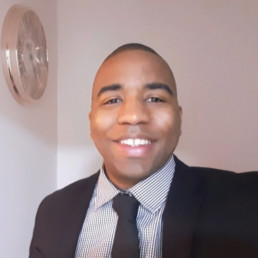
Written by Javay Welter
NPQ, MSc, Outstanding MFL teacher, public speaker, mentor and linguist.
On the 16th of October, I witnessed greatness. The Aspiring Heads Leadership Summit was phenomenal. Nadine and Ethan Bernard hosted a truly remarkable conference. Above all, this was the first leadership conference I had witnessed led by a current existing Black Headteacher, Nadine Bernard. Well done Nadine for your initiative, creating this platform and elevating future leaders. This was a pioneering conference, very timely and extremely forward-thinking.
The wide array of speakers in different fields provided a variety of perspectives and insights. Topics ranged from mentoring, strategic leadership to financial literacy. The speakers were all leaders and thought leaders in their respective fields. They shared their journey, resilience and barriers they had to overcome. The optional workshops were uplifting, insightful and edifying. I left feeling empowered, inspired and acquired so much wisdom.
The first keynote speaker Bose Onaboye, who is a business strategist and leader, spoke about finding your leadership style and being highly reflective. Leadership development is a process. She encapsulated that leadership is a journey and not a destination. Leaders are readers. Therefore, one must strive to keep developing oneself and undertake CPDs. I fully agree that leading is a journey, not just a title. We must strive for excellence.
Another charismatic speaker Karl Pupé, an educator and author, highlighted that we must step out of our comfort zone to grow. Leadership is not easy and we must embrace change to grow. We must embrace more black leaders in all walks of life and value their unique and valuable skill sets and contributions. He mentioned that his various previous jobs have helped to strengthen his behaviour management, for example, negotiation, conflict resolution and dealing with challenging behaviour. His book Action Hero Teacher: Classroom Management Made Simple is an exemplary book on behaviour management. A must-read for new teachers.
Diana Osagie, a former black Headteacher and CEO of Courageous Leadership focused on being a human first and a leader second. Well-being is key to longevity. If you do not have health, you cannot lead. Sayce Holmes Lewis, Founder and CEO of Mentivity advocated that we need more servant leaders rather than being ego-centric ones to promote positive change. We need to lead from the back like Nelson Mandela. Sayce passionately highlighted that positive black male role models are crucial and that Devon Hanson, a former black Headteacher acted as an inspiration. Lavinya Stennett, founder and CEO of the Black Curriculum pointed out that Black History should be incorporated in the national curriculum and that representation is vital to success.
The second keynote speaker, Dr Leroy Logan MBE who is a former Metropolitan Police superintendent. He was also the chair of the National Black Police Association and discussed fear. He eloquently commented that his father feared his career choice. His father suffered police brutality. However, he had seen black role models and police officers in Jamaica which inspired him and it was his calling. Leroy emphasised that he entered the police profession to make a positive contribution and to help change the Met. His book ‘Closing Ranks’ shares his incredible journey from humble beginnings to becoming one the first black police superintendent in the UK. Leroy faced many adversities, barriers and did not give up. Importantly, he had a dream just like Dr Martin Luther King Jr.
In conclusion, representation matters. Young pupils deserve a diverse education, inspiration and representation. Fundamentally, it is pivotal that they see leaders from diverse backgrounds to prepare them for the world of work. I believe that it would be beneficial to have more black and global majority leaders like Nadine Bernard leading conferences to elevate future generations and make a difference. Nadine has started a legacy. The next step is a follow-up conference.

